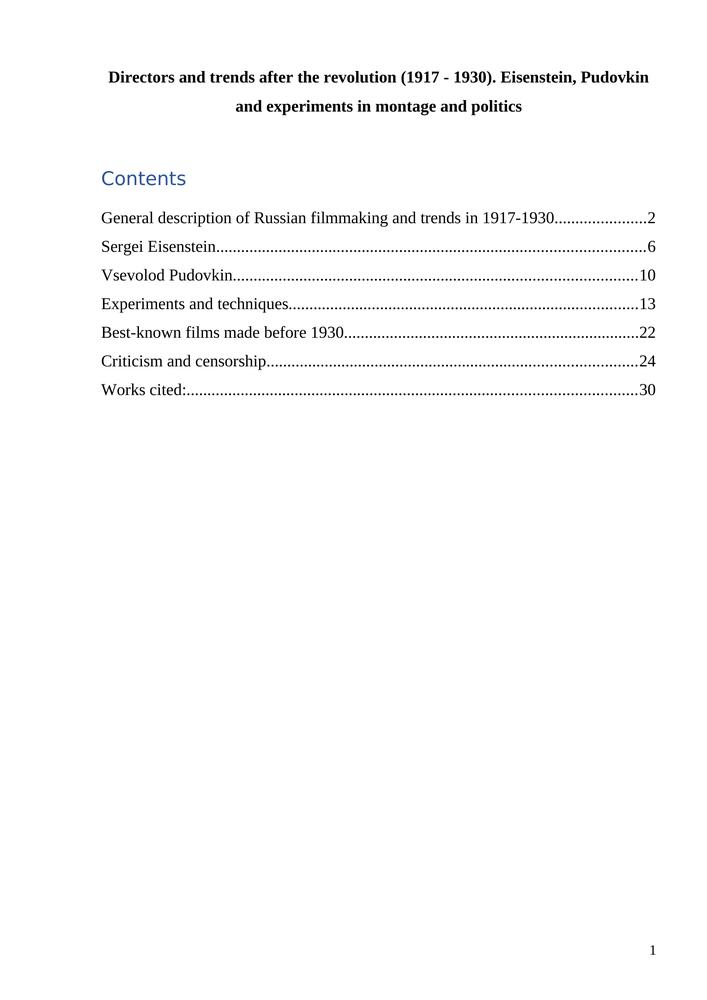Directors and trends after the revolution (1917 - 1930). Eisenstein, Pudovkin and experiments in montage and politics
DOC

Formalism, a Soviet film movement, developed in the country somewhat in response to other filmmaking cultures. The Soviet filmmakers, such as Pudovkin, Abram Room, Alexander Dovzhenko, Dziga Vertov, and most notably Sergei Eisenstein, wanted to develop a national identity for their cinema. In contrast with, for example, the German filmmakers such as G. W. Pabst, Fritz Lang, F. W. Murnau, and Robert Wiene who had given their own cinema a national identity through German expressionism, Soviet directors imagined an opposing style. Soviet formalism is very cinematic and has a heavy emphasis on montage.
The Formalism movement used the method of defamiliarisation - making objects strange in order to make them seem more real. Eisenstein's technique expressed their idea that mere reproduction is never valid unless it is a deviation from the norm, a risky thing to do under Stalin.